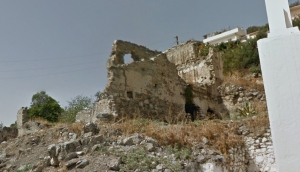The monastery of Agia Moni (Holy Monastery) is located about 60km east of Heraklion and 38km west of Ierapetra, near Kavoussi Gorge. It can be accessed via a short road that starts from Ano Viannos and passes through a verdant landscape.
The Historical and Folklore Museum of Viannos was founded in 1996 at the birthplace of a famous Greek author, John Kondilakis (a part of the museum is dedicated to him).
Ano Viannos during the Venetian era was the largest village in the province of Belvedere. It was therefore necessary for the Venetians to fortify the area very well. As we can see even today, there are some ruins of a Venetian tower found on the western part of the village, which was also used by the Turks.
The temple of Agia Pelagia is located at an elevated point with panoramic views of Ano Viannos town and can be accessed by walking through the narrow and scenic alleys of the village.
The church of Agios Georgios is located in the plane of Ano Viannos, on the road that leads to the Monastery of Agia Moni. It is a small vaulted and single-aisled church with its interior bearing frescoes of Ioannis Mousouros, dating back to the beginning of the 15th century (there is the date 1401). The temple was built at the expense of Georgios Damoro.
- 1
- 2






















































































